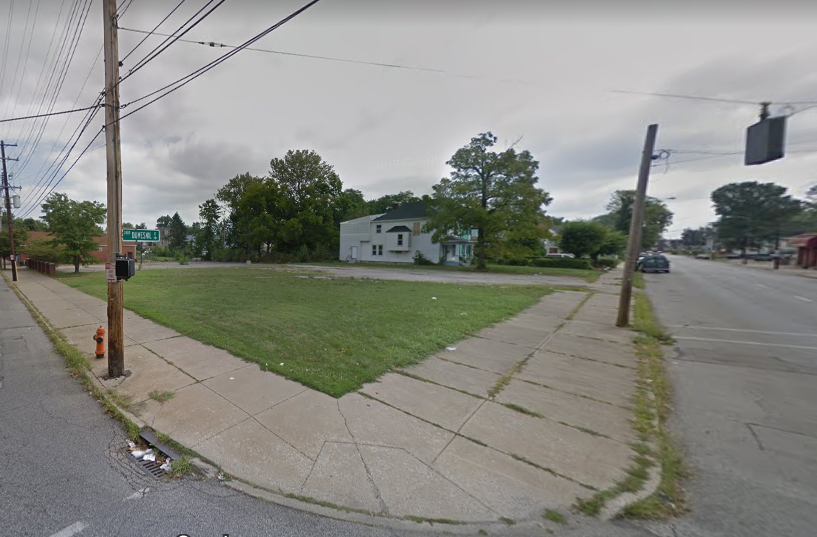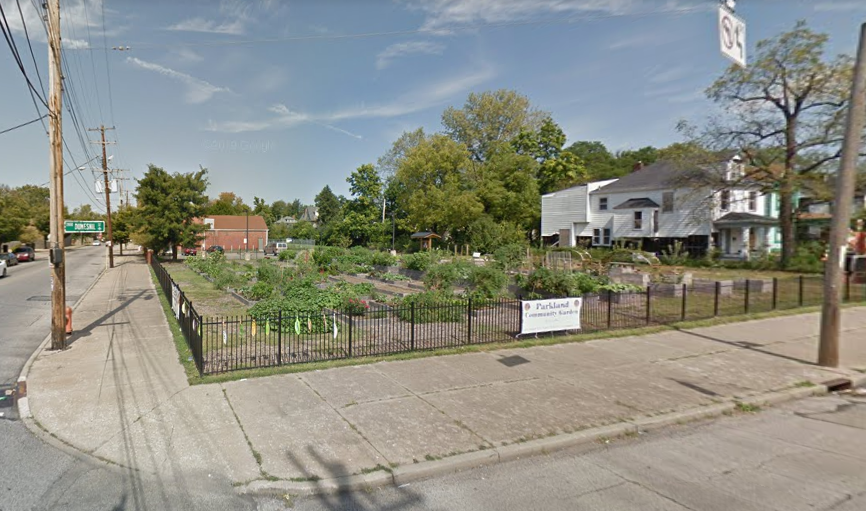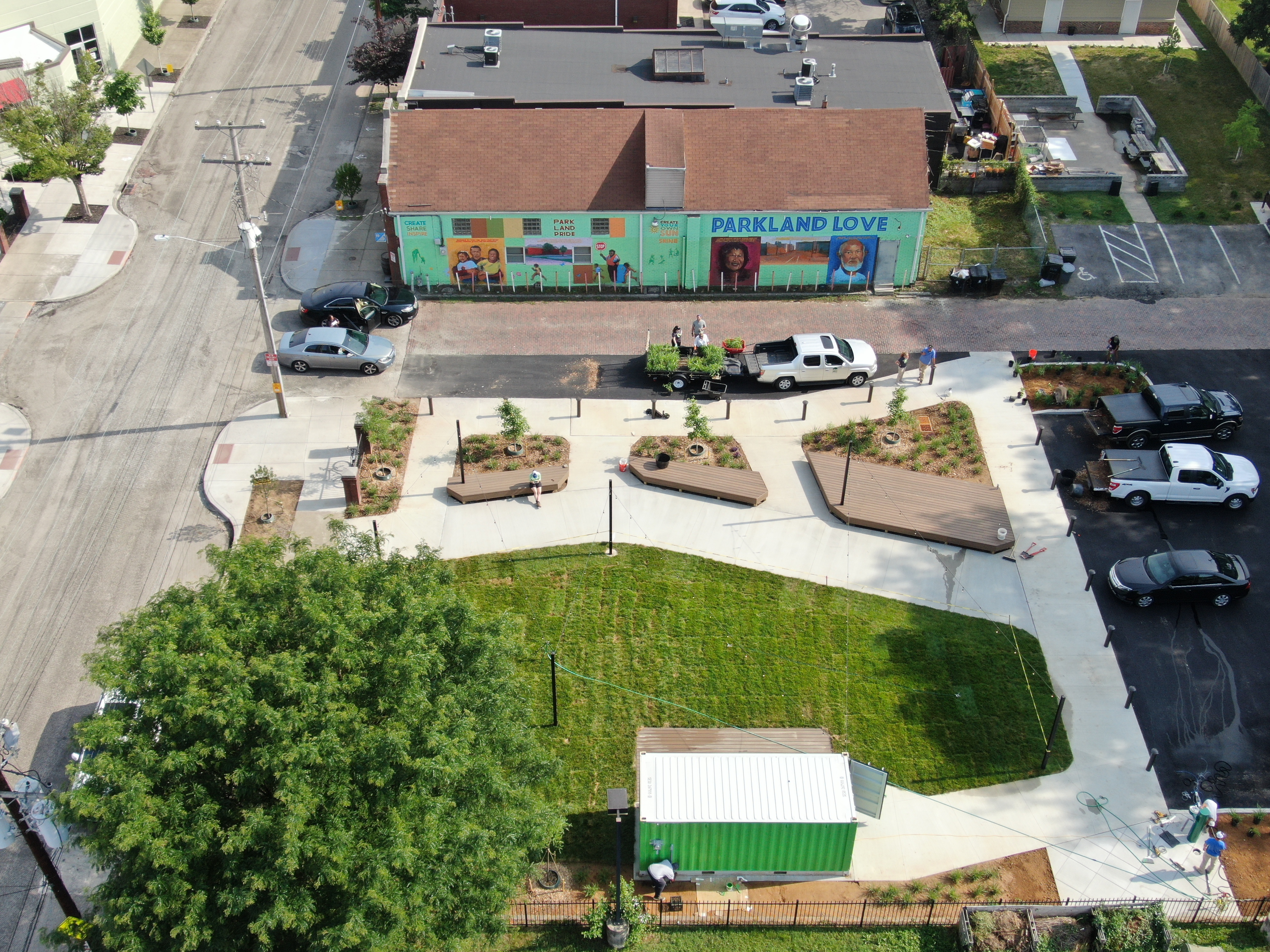During this, our 50th anniversary year, we’re sharing 50 reasons to celebrate Center for Neighborhoods — roughly one reason each week. The posts come from different stakeholders in the organization, representing our past, present, and future.
This week’s post is written by Rob Monsma, Planning Director
Since the doors of the Louisville Community Design Center (later renamed Center for Neighborhoods) opened in 1972, the foundation of our work has been providing assistance to our neighbors as they have asked. Sometimes the progress moves slowly but the benefits of long-term engagement, organizing, and community building are deep and consequential. A good example of this type of community-led development can be found in the Parkland neighborhood where CFN has been working alongside residents for nearly 40 years. Former Executive Director Jack Trawick recounts his experiences working with residents and business owners as they worked to organize and rebuild the town center in the 1980s:
“CFN became involved with Parkland around 1986, when we were introduced to a small group of business owners and neighborhood advocates working together as the Parkland Area Business Association (PABA). The members included George Stovall and Frances Friel, co-owners of Friel & Stovall Drywall and Hardware (now Big Mama’s restaurant), Lena Marchbanks, owner of a dress shop and tax business next door to the hardware store, and concerned Parkland citizens Alma Howell and her brother Raymond O. Parks, Sr. At the time, the only remaining businesses in Parkland were Friel & Stovall’s and Ms. Marchbank’s on 28th St., along with Hathaway’s and W.P. Porter’s mortuaries, both on Virginia Avenue. The two-story commercial building with apartments above at the southeast corner of 28th and Dumesnil, and the grocery store on 28th had both been vacant for years. CFN’s involvement at the time didn’t lead to any immediate measurable outcome. More than anything, we were there to provide moral support to the small group of elders who held out hope that the City might someday show interest and the district might be revitalized.
During most of this period, I was accompanied to monthly PABA meetings by my colleague Patti Clare. We became close with Mr. Stovall, Mrs. Howell, and Mr. Parks, but also with Ms. Friel — Frances, as we came to know her. Frances was an older, single white woman, and the store and Parkland were her life. She would keep the store open even on Christmas day, so that neighborhood children would have a place to come and get Christmas candy. Patti and I made it our custom to visit Frances on Christmas morning where she would be sitting at the front of the otherwise unheated store near a small electric space heater. At the time of our last Christmas visit, Frances surprised Patti and I by giving us a box of her Christmas ornaments, very old and fragile glass ones. It is for this reason that visiting Parkland again for the dedication of Parkland Plaza evoked such strong feelings and memories. There wasn’t much reason for hope back then, but there was a whole lot of love and kindness that made coming to meetings so welcome. They were all such good people.”
More recently, CFN has partnered with Parkland residents through each of our Neighborhood Institute, PAINT, and Better Block programs to help realize the vision they have for their community. In 2013, Neighborhood Institute graduates Steve and Yvonne Edwards were part of a group that helped transform a vacant lot on the corner of 28th and Dumesnil St. into a community garden that is thriving.


CFN staff worked with Parkland residents in 2014 to produce the “Parkland Rising”, a PAINT project focused on developing an appreciation of Parkland’s ability to recreate itself from the ashes of poverty, crime, and hopelessness and to once again claim its status as a prominent Louisville community. The project explores concepts of renew, reuse, & recycle to create an environmentally responsible Phoenix, symbolizing the rising socioeconomic, political, and family status of Parkland. The Parkland Community Garden was the site of another PAINT project later that year with “I Can, I Am, I Will, I Dream”, a sculpture made of recycled materials in the shape of a tree where residents could place leaves with messages reflecting their community vision for the public to see.
In 2019, CFN staff and Parkland residents worked collaboratively to create the theme of “Parkland Love” which was the foundation of the Parkland Better Block and a collective neighborhood history booklet. The Better Block program transformed an underutilized parking lot and adjoining vacant lot into an active community and play space where neighbors could come together, listen to music, and children could play. This effort followed the vision of the 2017 Neighborhood Plan which identified the vacant lot as a space that could be revitalized to better serve the community.

Following the Parkland Better Block, CFN was part of a partnership of residents, non-profits, Metro Council District 1, Louisville Metro Government, and local design firms to build the Parkland Plaza at 2757 Dumesnil St. This effort produced a permanent de-paving and installation of the neighborhood vision and ideas that came from their 2017 Parkland Neighborhood Plan and were piloted during the Parkland Better Block. CFN staff and residents facilitated a PAINT project by artist Victor Sweatt on an adjacent childcare center that reflected the theme and histories encompassed in “Parkland Love”. Construction began on the Parkland Plaza in October 2021 and the grand opening to the public was on July 23, 2022.

The opening of the Plaza marks the culmination of several decades worth of collaborative work between Parkland neighbors and CFN staff to make their vision for their community come to life, a relationship that will continue into the future whenever we are asked. It also presents a form of community building where residents are placed at the head of the decision making process and CFN staff provides technical assistance where we can. This intentional process continues to be the foundation of our work as it has since we opened our doors to the public in 1972. While the various programs have produced artwork and space that serve as physical reminders of a collective effort in time, the work we are most proud of is the communities who organized to make their vision a reality and the lasting impact of that effort as they continue into the future.
